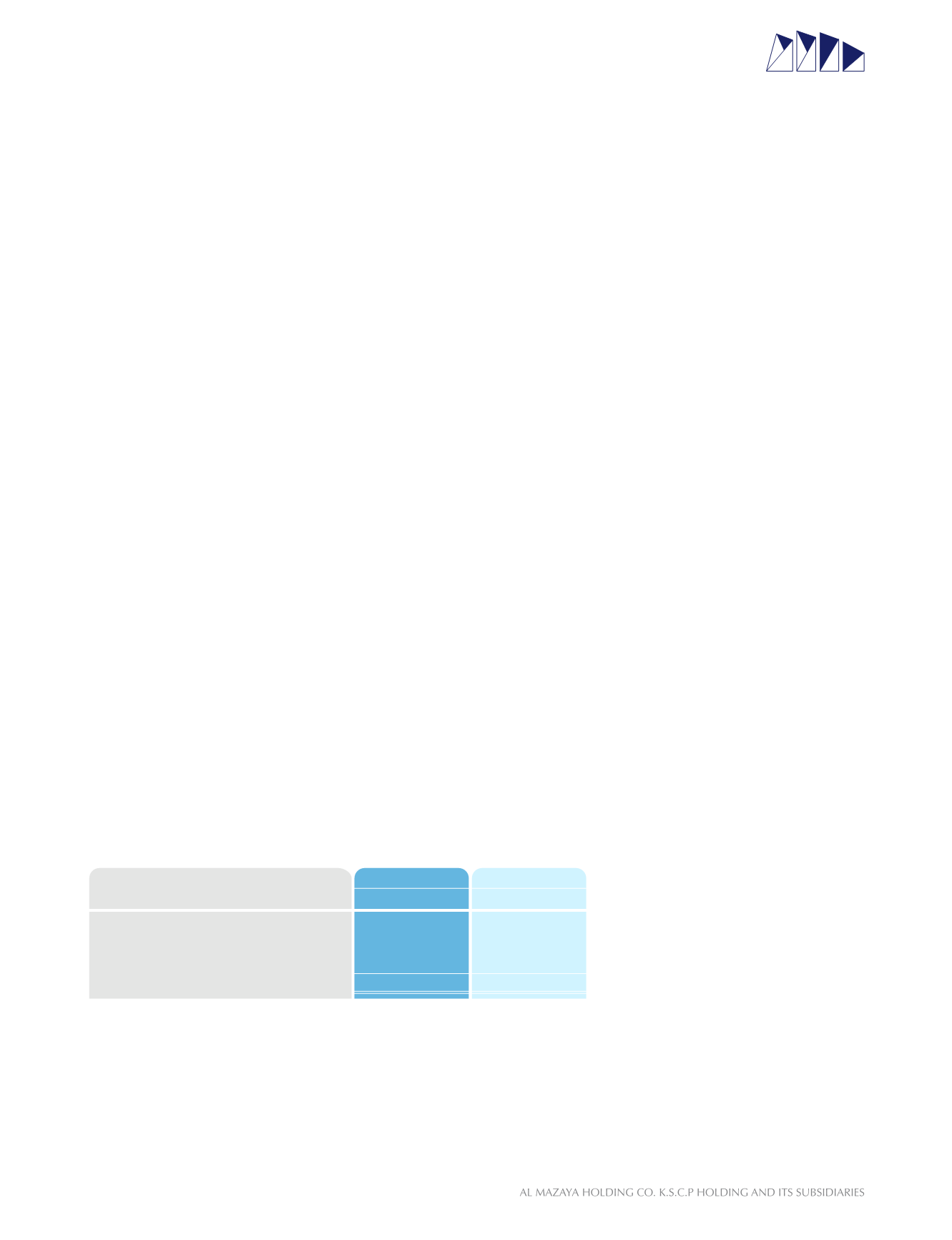

ANNUAL REPORT
2015
Notes to The Consolidated Financial Statement
AL MAZAYA HOLDING COMPANY K.S.C.P. AND ITS SUBSIDIARIES
31 December 2015
Introduction
Risk is inherent in the Group’s activities but it is managed through a process of ongoing identification, measurement and monitoring,
subject to risk limits and other controls. This process of risk management is critical to the Group’s continuing profitability.
Risk management structure
The Board of Directors of the Parent Company is ultimately responsible for the overall risk management approach and for approving
the risk strategies and principles.
The major risks to which the Group is exposed in conducting its business and operations, and the means and organisational
structure it employs in seeking to manage them strategically in building shareholder value are outlined below.
Excessive risk concentration
Concentrations arise when a number of counterparties are engaged in similar business activities, or activities in the same geographic
region, or have similar economic features that would cause their ability to meet contractual obligations to be similarly affected by
changes in economic, political or other conditions. Concentrations indicate the relative sensitivity of the Group’s performance to
developments affecting a particular industry or geographical location.
In order to avoid excessive concentrations of risk, the Group’s policies and procedures include specific guidelines to focus on
country and counter party limits and maintaining a diversified portfolio. Identified concentrations of credit risks are controlled
and managed accordingly.
30.1 Credit risk
Credit risk is the risk that one party to a financial instrument will fail to discharge an obligation and cause the other party to incur
a financial loss. The Group manages credit risk by setting limits for individual counter-parties, monitors credit exposures, and
continually assesses the creditworthiness of counterparties, with the result that the Group’s exposure to bad debts is not significant.
The Group trades only with recognised creditworthy third parties. In addition, receivable balances are monitored on an ongoing
basis. For transactions that do not occur in the country of the relevant operating unit, the Group does not offer credit terms without
the approval of the Group management.
With respect to credit risk arising from the other financial assets of the Group, which comprise bank balances, short term deposits
and account receivables the Group manages that risk by dealing only with reputable banks.The Group’s exposure to credit risk
arising from default of the counterparty has a maximum exposure equal to the carrying amount these instruments.
Due to the nature of the Group’s business, the Group does not take collaterals against receivables.
30.1.1 Gross maximum exposure to credit risk
The table below shows the gross maximum exposure to credit risk across the Group’s financial assets.
Financial assets of the Group subject to credit risk are distributed over the following geographical regions:
2015
KD
7,511,877
13,025,378
7,645
20,544,900
Kuwait
UAE
Other
2014
KD
9,070,010
13,734,809
7,404
22,812,223
87
The Group’s exposure relates predominately to real estate and construction sectors.
There is no concentration of credit risk with respect to real estate receivables, as the Group has a large number of tenants.
30.1.2 Credit quality of financial assets that are neither past due nor impaired
The Group neither uses internal credit grading system nor external credit grades. The Group manages credit quality by ensuring
that credit is granted only to known creditworthy parties.


















